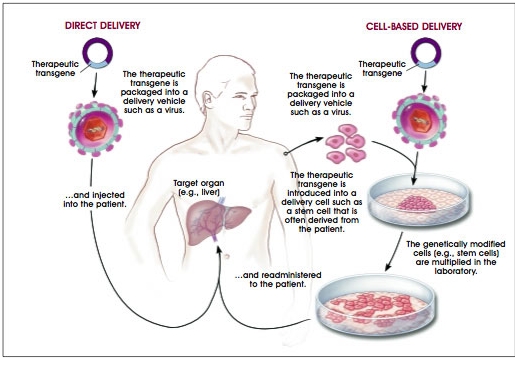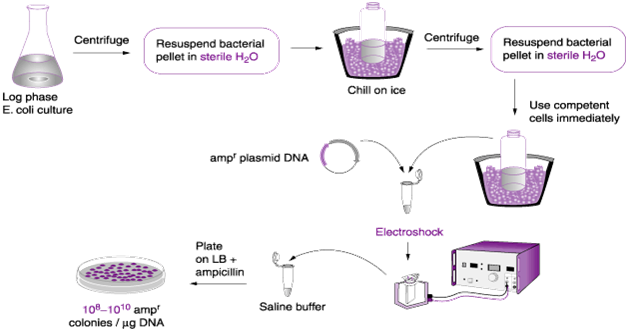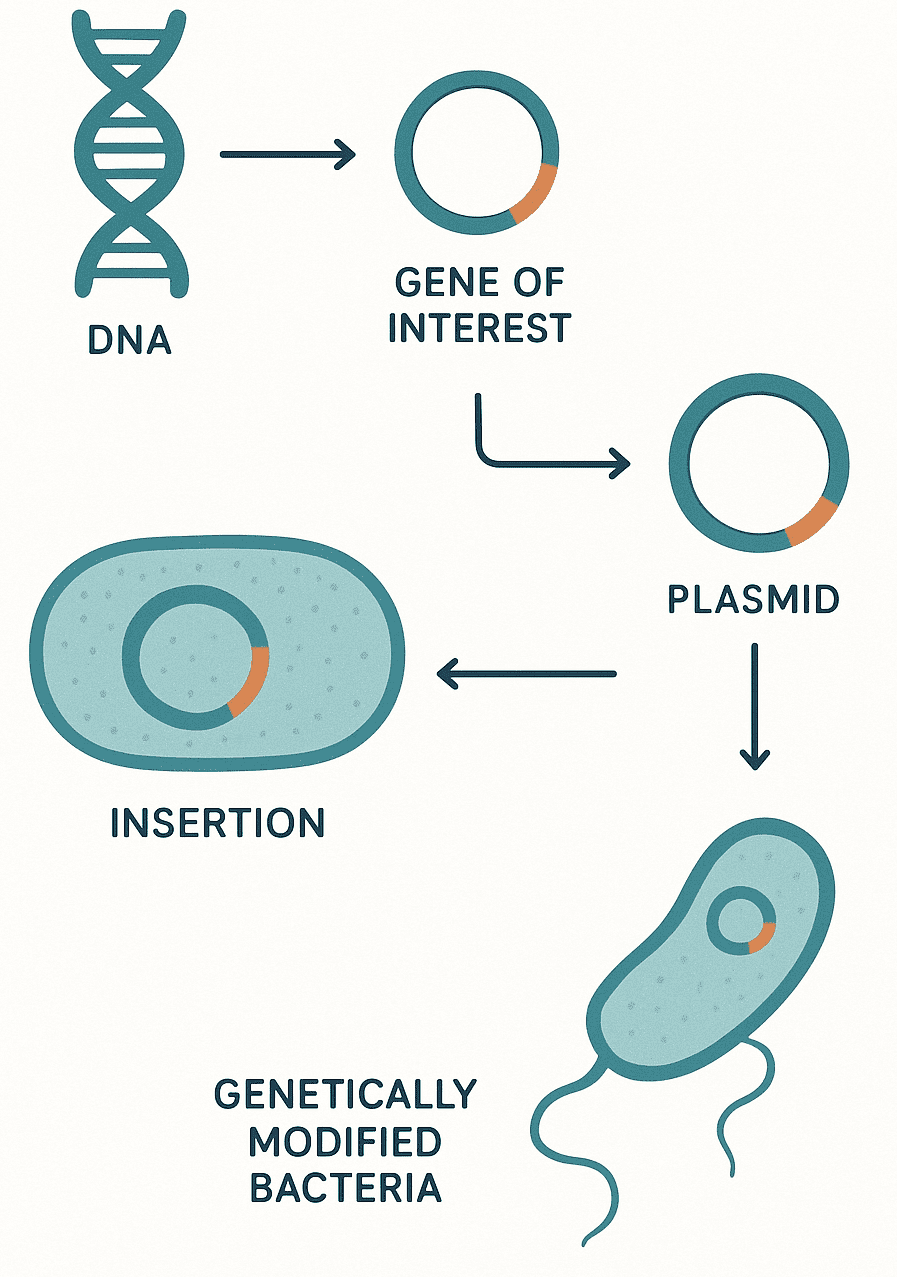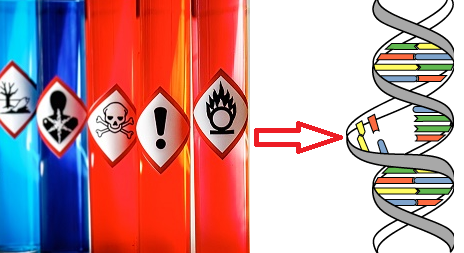Digital PCR (dPCR) is a method of quantifying nucleic acid (DNA or RNA) targets without […]
Category: Biotechnology
Metaproteomics & Transcriptomics
What is Metaproteomics? Metaproteomics refers to the large-scale characterization of the complete set of proteins […]
Harnessing the Power of Prebiotics and Synbiotics: A New Frontier in Gut Health and Beyond
IntroductionIn recent decades, scientific interest in gut health has intensified significantly, driven by a growing […]
Matrix-Assisted Laser Desorption/Ionization-Time of Flight Mass Spectrometry (MALDI-TOF MS) workflow
The workflow of Matrix-Assisted Laser Desorption/Ionization-Time of Flight Mass Spectrometry (MALDI-TOF MS) involves several critical […]
How does metagenomic sequencing differ from whole-genome sequencing (WGS)?
Metagenomic Sequencing Metagenomic sequencing and whole-genome sequencing (WGS) are distinct techniques, but they can generate […]
RISKS, PROBLEMS AND ETHICAL ISSUES OF GENE THERAPY
Gene therapy is used to deliver functional genes or therapeutic DNA into target cells and […]
APPLICATIONS OF GENE THERAPY IN TREATING MOLECULAR DISEASES
Molecular diseases (genetic disorders) are non-infectious inheritable diseases which are usually caused by mutations that […]
POTENTIAL USES OF GENE THERAPY
Gene therapy techniques are an emerging field of experimental medicine and therapy for treating or […]
HOW GENE THERAPY WORKS
Genes are made of deoxyribonucleic acid (DNA) molecules – which are the main genetic material […]
IN VIVO DELIVERY FOR GENE THERAPY
In vivo delivery for gene therapy can also be called a direct delivery protocol for […]
PLASMIDS
Plasmids are extrachromosomal DNA molecules found in both eukaryotic and prokaryotic microorganisms that have the […]
GENE THERAPY TARGETING AND DELIVERY
The efficient delivery of therapeutic proteins or DNA into specific cells or tissues of an […]
PREREQUISITES OR STEPS FOR GENE THERAPY
Gene therapy is an experimental discipline or research that uses functional gene (i.e. therapeutic DNA) […]
HISTORY OF GENE THERAPY
The history of gene therapy techniques dates back to the early 1970s and 1980s when […]
NITROGENOUS BASES – Purine and Pyrimidines
Genes in the DNA code for proteins; and it is the gene that directs the […]
Genes
Genes are sections of the deoxyribonucleic acid (DNA) that codes for the synthesis of a […]
BLOTTING TECHNIQUE
Blotting is used in molecular biology to transfer nucleic acids and proteins from gel to a membrane for identification and analysis. Developed in the 1970s, it combines electrophoresis and immunological methods. There are three main types: Southern (DNA), Northern (RNA), and Western (proteins), each allowing detection and measurement of specific molecules.
WESTERN BLOTTING TECHNIQUE
Western blotting technique or protein immunoblot is used to identify specific proteins separated according to […]
NORTHERN BLOTTING TECHNIQUE
Northern blotting technique is used to detect specific sequences of ribonucleic acid (RNA). The protocol […]
SOUTHERN BLOTTING TECHNIQUE
Southern blotting, developed by Sir Edward M. Southern in 1975, is a molecular technique used to detect specific DNA sequences. It involves transferring DNA from a gel to a nitrocellulose membrane, followed by hybridization with radiolabeled probes. This method is pivotal in DNA analysis, forensic science, and paternity testing.
Features of probiotics & reported modes of action of probiotics
Microorganisms must meet stringent criteria to be used as probiotics, including being non-pathogenic, non-toxic, and able to survive stomach acid and pancreatic secretions. Probiotics confer health benefits such as enhancing the immune system, producing vitamins, preventing GI infections, and aiding in lactose digestion, potentially treating conditions like IBS and eczema.
Design and Operation of Fermenters: Engineering Optimal Environments for Microbial Cultivation and Industrial Bioproduction
Introduction Fermentation stands as a fundamental and versatile process across multiple scientific and industrial disciplines, […]
Approaches to Microbial Strain Improvement for Industrial Applications
Introduction Microbial strain improvement is a critical process in industrial microbiology and biotechnology, aimed at […]
Melting curve analysis in Real-time PCR
Melting curve analysis and detection systems Melting curve analysis can only be performed with realtime […]
Real-time PCR probes
TaqMan® probe signal production Whether an MGB or non-MGB probe is chosen, both follow the […]
Real-time PCR fluorescence detection systems
Real-time PCR fluorescence detection systems Real-time fluorescent PCR chemistries Many real-time fluorescent PCR chemistries exist, […]
Real-time PCR analysis technology
BaselineThe baseline of the real-time PCR reaction refers to the signal level during the initial […]
Real-time PCR primer design
Good primer design is one of the most important parameters in real-time PCR. This is […]
INTRODUCTION TO REAL TIME POLYMERASE CHAIN REACTION (RT PCR)
The polymerase chain reaction (PCR) is one of the most powerful technologies in molecular biology. […]
HOW TO DESIGN PRIMERS FOR YOUR PCR EXPERIMENT
Primers are short stretches of DNA that target unique sequences of a DNA molecule and […]
PROBIOTICS
According to the World Health Organization (WHO) and the Food and Agriculture Organization of the […]
CELL IMMOBILIZATION
Cell immobilizationis the process of fixing the cells of living organisms including plants, animals, […]
STEPS INVOLVED IN TRANSFORMING BACTERIAL CELLS
There are different types of steps involved in the transformation of a bacterial cell in […]
GENE CLONING
Cloning is a molecular biology technique which is used to make millions of copies of […]
Application of genetically modified organisms (GMOs)
The field of medicine has in the past decades seen the production of many biotherapeutics […]
GENETICALLY MODIFIED ORGANISMS (GMOs)
Genetically modified organisms(GMOs) are living organisms including plants and microorganisms whose genetic material has been […]
Saccharomyces cerevisiae: Morphology, Physiology, and Biotechnological Applications of an Ancient and Modern Yeast
Saccharomyces cerevisiae, commonly known as baker’s yeast or budding yeast, is a unicellular eukaryotic […]
Processes of Beer Production
Beer production is an ancient and intricate biochemical process that has evolved over thousands of […]
MUTAGENESIS
Mutagenesis is the careful alteration of the genetic information of an organism’s genome in such […]
MUTATION
Mutation is a change in the genetic make-up (or DNA) of an organism.It is an […]
APPLICATIONS OF MUTAGENESIS
Recombinant DNA technology and the use of synthetic DNA molecules make it possible for […]
MUTAGENS
Mutagens are biological, physical or chemical agents that change the genetic materials (inclusive of DNA […]
PCR TECHNIQUE
PCR is the acronym for “polymerase chain reaction”. Polymerase chain reaction is the molecular biology […]
ENZYMES USED IN MOLECULAR BIOLOGY TECHNIQUES
Restriction endonucleases are DNA cutting enzymes specifically found and isolated from bacteria; and which nick […]
CLASSIFICATION OF MUTATION BY THEIR EFFECTS ON THE DNA MOLECULE
Based on their effects on the structural integrity of the DNA molecule, mutations can be […]
MUTATION: definition, types and causes
The term mutation is derived from the Latin word “mutare” – which means “to change”. […]
Molecular Manipulation of Microorganisms: significance and applications
Microorganisms including bacteria, fungi, algae and viruses are important tools used for a wide variety […]
LIPOSOMES: relevance & applications
The phrase liposome is derived from two Greek words: Lipos which means “fat” and Soma […]
Feeding the Future: How Single Cell Proteins Can Help Solve Global Malnutrition
As the global population races past 8 billion and continues to rise, the urgency to […]
Bacterial Transformation (The Transforming Principle)
Fredrick Griffith showed in 1928 that deoxyribonucleic acid (DNA) is the genetic material of the […]
















































